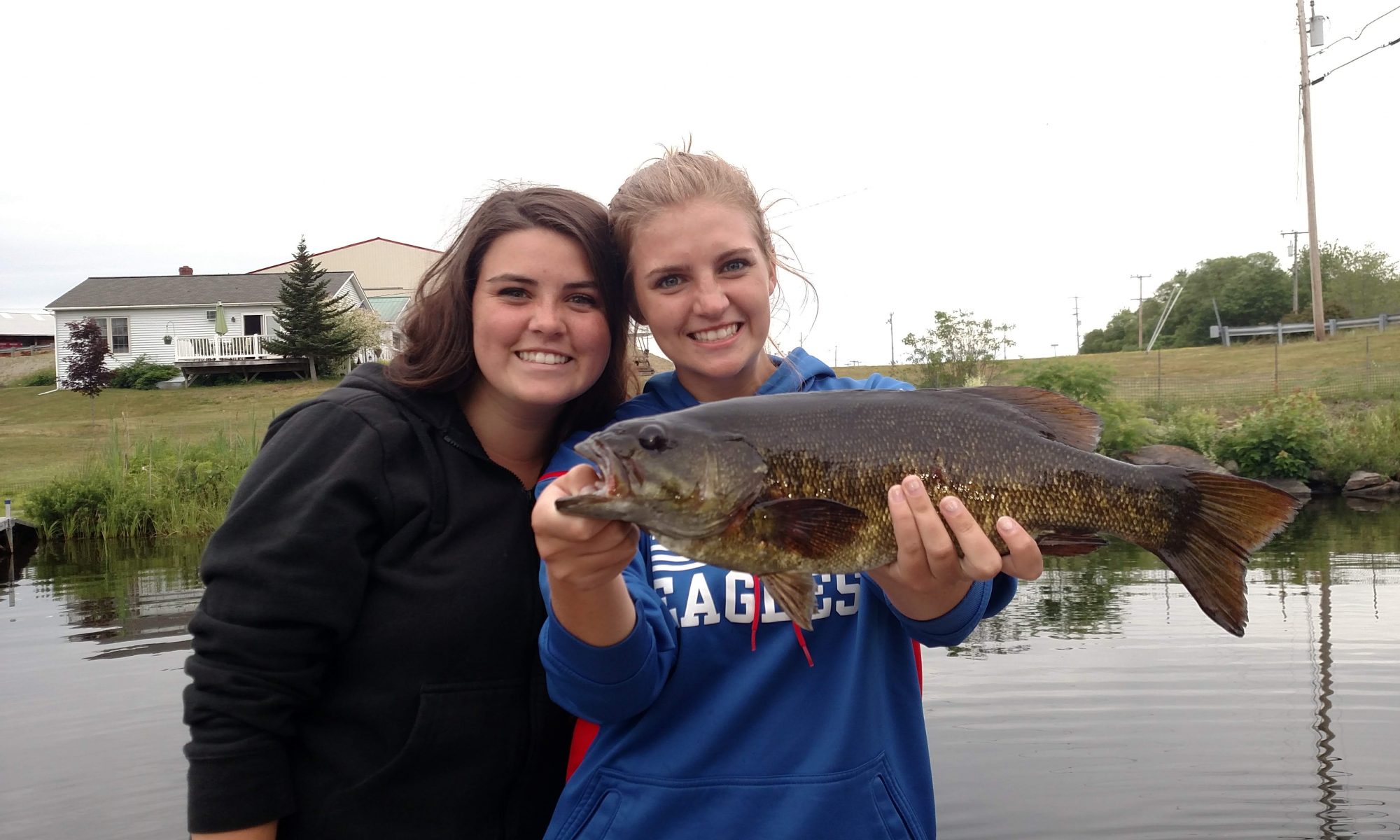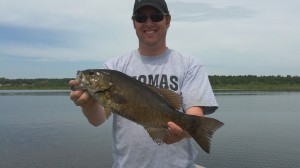New Brunswick Spring Bear Hunt
Since I am usually over scheduled during Maine’s fall Bear hunt season I decided to take a trip north of the border and try a spring hunt for black bear in New Brunswick.
My destination was to be at a lodge on the Miramichi River in Juniper New Brunswick. Upon arrival I meet with owners Frank and Eileen MacDonald and I am soon settled into my cabin. From my cabin I can hear a small brook that cuts through the property and dumps into the big river several hundred yards away. I decided that breakfast would consist of one of the inhabitants of that brook.

I soon found myself at the main lodge and settled into a long chat with Eileen in her oversized kitchen where I try samplings of good country cooking including pie, date squares, and brownies. This was followed by a hearty dinner of roast, potatoes, vegetables, and most importantly great conversation. I hadn’t even set foot in the woods and yet I know this was going to be a special hunt
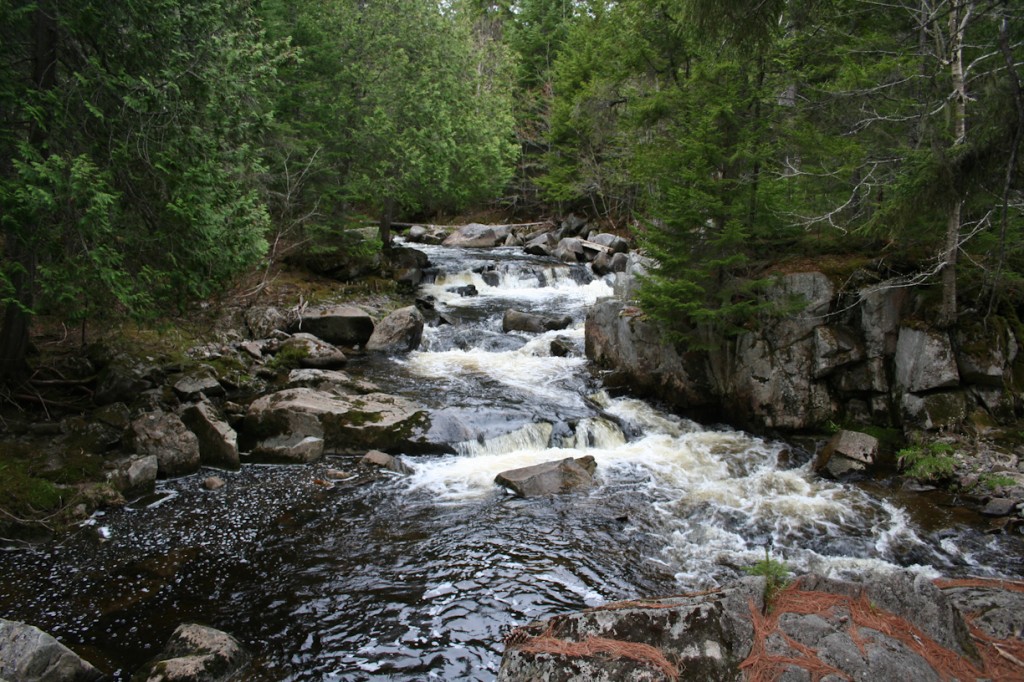
The next morning I am up at 6:00am and by 6:15 I have caught my first brook trout. I add another and then head back to my kitchenette to use some of the butter I had bought yesterday and a supply of spices Eileen had furnished. The smell of pan frying trout brings back memories from decades past of when my dad would fry up trout on the river shore as I was catching them. A simple of meal of toast and trout and I am on top of the world. Man I don’t understand how anyone could be a vegetarian.
After a hearty lunch with Frank, I sight in my .30-06 and we are off to the bait sites to set up for the evening hunt. For those who have never bear hunted it is quite the experience. Like humans, bears are predators and consequently they are little more wary of human encounters and rarely seen in the middle of the day. The opportunity to see a bear in the wild is pretty rare, especially here in Maine with thick woods. Other than in National and State parks I have only seen one bear in the wild in a non-hunting situation. So, if you want to hunt bear you need to try and either track them with dogs or bait them.
Usually a bear that approaches a bait site will have circled the area prior to coming in to try and pickup any unusual scent and assess the area for possible danger. The hunter may not even realize a bear has been as close as twenty yards and then bailed from the area because the hunter’s scent was detected or the bear saw some movement. Ground blinds are a cure for the latter issue but do not offer the visibility that a tree stand offers. Also, many bear hunters are leery of sitting on the ground in the middle of bears.
I settle into my tree stand and Frank refreshes the bait and soon departs. I quickly realize that it’s going to be a long sit tonight. The temperature is unseasonably cool and the wind is picking up. Both lousy bear hunting conditions. I curse myself for under dressing. I am going to freeze my butt off tonight. There is no activity for the next five hours and by the time I hear the engine from Frank’s truck I am pretty much stiff from the cold and extracting myself from the tree stand is a bit tricky.
The following day I decide to hunt the same stand again because it has warmed up and there is no wind tonight. Perfect for bears and I really want a chance at the trophy bear that has been hitting the bait site I sat on last night.
The drive in is pretty interesting. We see several moose, a partridge, a turkey vulture, and rabbits. These woods are teaming with wildlife and I know there has to be a bear in the picture here somewhere.
The evening is great. It’s a complete opposite of last night’s cool and windy event. There is no wind, its comfortably warm, and my Therma Cell is doing its job of keeping the bugs away.
Around 6:30 much to my surprise a massive bear wanders into the bait site. I have no idea where he came from – he just appeared in front of me! I am trying to be as still as possible and flip off the safety on my gun. My heart is pounding with excitement. I have never seen a bear this big before and I am fumbling with the damn safety on the gun. I have fired hundreds of rounds through this gun and never before had an issue with the safety. What is wrong with it? Then I realize much to my chagrin that I have been trying to flip the switch in the wrong direction. I’ve got to get my emotions under control.
The bear is really nice boar. Large head and at least 300 pounds! Clearly he didn’t get this big by being stupid. He seems very wary and is looking right at me on the tree stand. Before I can even get a sight on him he wanders away. I can’t believe it. Did I spook him in all the fumbling to try and get the safety switched off on my gun? Did he pick up a scent from me?
For the next couple of hours I sit in doubt. I wonder what happened and how was I going to explain this to my guide. Then with about a half an hour before dark the bear comes wandering back.
I am frozen still. This time I leave the safety on and I keep absolutely still. He still won’t commit to the bait, but hovers in an area that doesn’t provide for a good shot, but does afford me the opportunity to really take stock of this guy. He’s is definitely the bear that has been hitting the site and would make a really nice trophy. After a few minutes of hovering, he leaves again. My heart sinks.
This time he only wanders down an adjacent tote road about twenty-five yards or so and waits. I can still see part of him and so I slip off the safety and position my .06 for a quick shot should the opportunity present itself. I am rewarded for my patience as this time he comes back and heads directly to the bucket of fryer grease and fish feed. I slowly shoulder my rifle and he looks directly at me. I don’t have a perfect broad side shot but a pretty good shoulder lung shot and I decide to take the shot before he bails for a third time. The shot is on the mark and he is dead before he hits the ground. Man, what a night and what a hunt.
My heart is still pounding five minutes later as I am climbing down from the stand and I hear Frank’s truck approaching. I swear if I ever shoot an animal and I don’t feel as excited as I am right now I will just stay home. I meet Frank at the bait site and he jokes about me killing a small sow instead of the large boar we were after. He inspects the bear and is happy that this is the big one that he was hoping we would get. He thinks it is at least 150 kilograms, or 330 pounds. That’s a big spring bear and he has a really nice Boone and Crocket class head and a good coat.

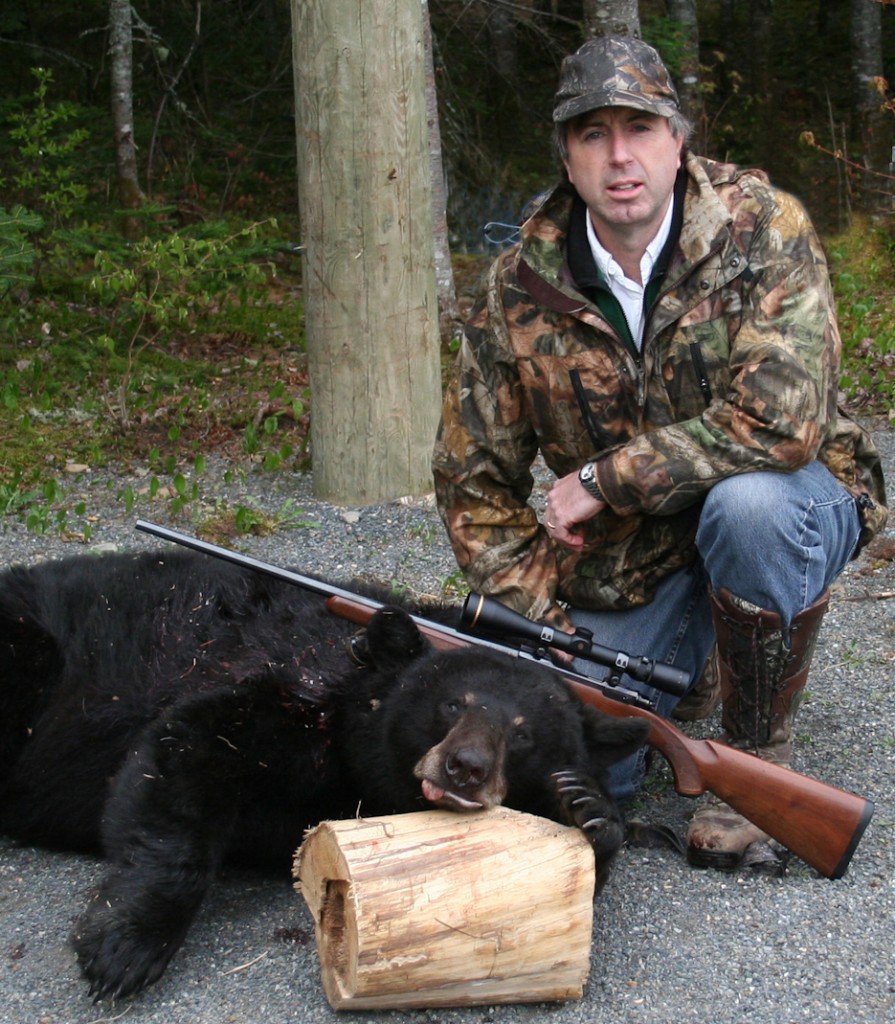
Despite the late night last night I am up just after six o’clock and I want to get some pictures with the bear before Frank takes him off to the skinner.
His head is awesome and I snap some really great shots of him. His paws are enormous and I try to imagine the incredible strength this magnificent creature had. Frank needs to extract a tooth to have the bear aged by the Canadian Wildlife officials. In doing so we see that his top teeth are completely worn down indicating this bear is probably at least fifteen years old. His bottom teeth are likewise. We weigh him and the scale indicates a weight of 165 kilograms or 360 pounds. Considering that a bear normally loses about forty percent of its body weight over the winter this guy would have probably tipped the scales at over 600 pounds last fall. A true bruiser.
Later in the afternoon we get back the hide and skull from the skinner we see that the lower jaw was in an advanced state of bone decay. This old bear probably wouldn’t have lasted another season. Frank estimates that he was probably close to twenty years old.
I’m not sure when I will return to New Brunswick for another hunt but for now I have a great trophy and even greater memories of my spring bear hunt.
Darrell Pardy
June 2011
 Summer is kicking into high gear and everyone is out enjoying the beautiful weather and perfect swimming conditions. It’s so much fun to see the lakes being enjoyed by everyone from jet skiers to water-skiers to sunbathers sitting on the ends of their docks. All this sunshine brings out the best in people too and we’ve had some wonderful conversations with folks as we fish by their cottages; the traditional “great weather eh?” and “how are they biting” along with stories of moose swimming across Great Pond’s Austin Bog and aggressive beavers chewing down newly planted apple trees. This is what summer in the Belgrades is all about.
Summer is kicking into high gear and everyone is out enjoying the beautiful weather and perfect swimming conditions. It’s so much fun to see the lakes being enjoyed by everyone from jet skiers to water-skiers to sunbathers sitting on the ends of their docks. All this sunshine brings out the best in people too and we’ve had some wonderful conversations with folks as we fish by their cottages; the traditional “great weather eh?” and “how are they biting” along with stories of moose swimming across Great Pond’s Austin Bog and aggressive beavers chewing down newly planted apple trees. This is what summer in the Belgrades is all about.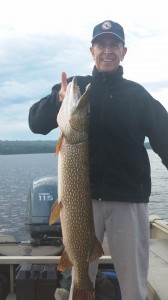 fishing has been hot, it’s been amazingly hot and when it turned off, you might as well go eat one of those donuts. The key has been getting the fish active and keeping the bite alive for as long as possible, especially as the sun gets higher in the sky. Live
fishing has been hot, it’s been amazingly hot and when it turned off, you might as well go eat one of those donuts. The key has been getting the fish active and keeping the bite alive for as long as possible, especially as the sun gets higher in the sky. Live